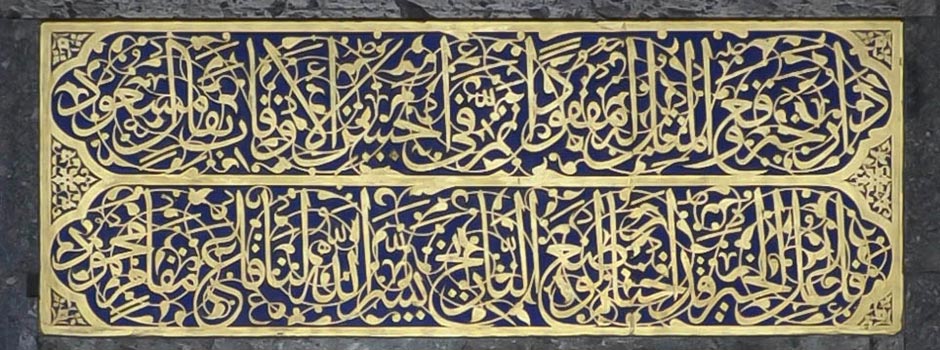
ARCHITECTURE Early Architecture of Istanbul - Mahmut Pasha Mosque and Murat Pasha Mosque
Jul 17, 2017 FEATURE, Architecture

This article is part of the project 'Promotion of the Ottoman Cultural Heritage of Bosnia and Turkey' which is organized by Monolit, Association for Promoting Islamic Arts and supported by the Republic of Turkey (YTB - Prime Ministry, Presidency for Turks Abroad and Related Communities).
After the construction of his mosque, Sultan Fatih generously gave a chance to his viziers and pashas to build mosques and kuliye, as the city gradually transformed from a Christian to an Islamic centre. This first wave of construction, which lasted about 50 years, was a continuation of what we had seen in Bursa and Edirne until then, even after 1480. It was clear that Ottoman sacral architecture was slowly getting new patterns.
From that early period, two mosques are particularly interesting, Mahmut Pasha Mosque from 1463 and Murat Pasha Mosque from 1473. Both were built in Bursa style with two parallel domes of the same size and side vaulted rooms. Later, such mosques were no longer built in Istanbul.
Mahmut Pasha was a great vizier during the period of Sultan Fatih and was originally a Serb. The construction of the Mahmut Pasha Mosque was completed in 1463, the same year as the construction of the Sultan Fatih Mosque began, so today it may be considered to be the oldest Istanbul mosque. It is located in the immediate vicinity of the Grand Bazaar. It is made of precisely cut and polished stone. The large wall surfaces leave a special impression of monumentality and are reminiscent of the Seljuq way of building walls.
The Mahmut Pasha Mosque was rebuilt several times. For the first time in the 18th century. On the porch, the marble pillars were replaced with stone pillars, probably after a major earthquake. The next changes were made in 1828/29 when a new mahwil was added. Later, the mihrab and the mimbar were changed, and in the completely inadequate style of the 19th century which violated the decorative whole of the interior. Above the entrance, there is one of the most successful inscriptions in Ottoman art, with interwoven calligraphy and Rumi ornamentation. Next to the mosque is the Mahmud Pasha Turbe (mausoleum).
-IslamicArtsMagazine.jpg) The Mahmut Pasha Mosque / Photo © Islamic Arts Magazine
The Mahmut Pasha Mosque / Photo © Islamic Arts Magazine
-IslamicArtsMagazine.jpg) The Mahmut Pasha Mosque, domes / Photo © Islamic Arts Magazine
The Mahmut Pasha Mosque, domes / Photo © Islamic Arts Magazine
-IslamicArtsMagazine.jpg) The Mahmut Pasha Mosque, the inscription above the entrance door / Photo © Islamic Arts Magazine
The Mahmut Pasha Mosque, the inscription above the entrance door / Photo © Islamic Arts Magazine
-IslamicArtsMagazine.jpg) L The interior of the Mahmut Pasha Mosque / R. Mahmut Pasha Turbe / Photo © Islamic Arts Magazine
L The interior of the Mahmut Pasha Mosque / R. Mahmut Pasha Turbe / Photo © Islamic Arts Magazine
The Murat Pasha Mosque is located in the Aksaray district in Istanbul and has a very similar spatial plan as the Mahmud Pasha Mosque, where the main prayer space is covered with two 21 m high domes and a diameter of 10.5 m. The side rooms are connected to the central part of the mosque. It was built with layers of rocks and bricks.
The interior has several examples of successfully made stone decoration, such as the side niches, and in particular the stalactite decoration on the dome above the mihrab. On the front, an elegant porch with slender pillars stands out, which later became a role model for other mosques.
A madrasa was located near a mosque but it was destroyed in 1935. Its founder Murat Pasha died in one military campaign only a year after the completion of the construction.
-Islamic-Arts-Magazine.jpg) The Murat Pasha Mosque / Photo © Islamic Arts Magazine
The Murat Pasha Mosque / Photo © Islamic Arts Magazine
-Islamic-Arts-Magazine.jpg) The Murat Pasha Mosque, interior / Photo © Islamic Arts Magazine
The Murat Pasha Mosque, interior / Photo © Islamic Arts Magazine
Comments
Add a comment